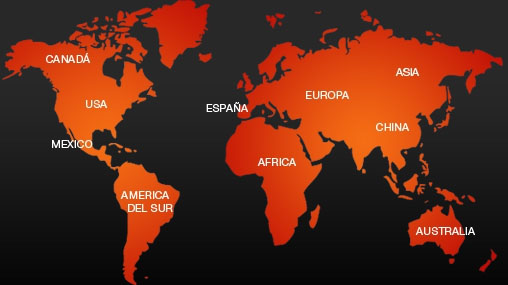- Inicio Acerca de RM Minerales
- Galería de fotos Blog RM Contacto
- Microscopia e instrumentos Pedidos Aviso legal
Copyright 2010-2025
www.rosellminerals.com



Un ejemplar clásico español de los que ya no se encuentran. Estos cristales de yeso de Ariño salieron hace muchos años y hoy día es difícil hallarlos ya que las explotaciones están abandonadas. Este ejemplar pertenece a una colección privada el propietario de la cual lo extrajo en los años 90.
destaca el cristal por su tamaño, transparencia y por las inclusiones carbonosas. En ciertas zonas muestra formas de disolución naturales.
Grupo de cristales de yeso selenita, uno de ellos de muy buen tamaño, que muestran una excelente transparencia y unas caras y aristas muy definidas. Ejemplar muy aéreo que ha crecido sobre una matriz de alabastro recubierta por pequeños cristales de yeso. En este ejemplar observamos la presencia de una marcada macla, lo que incrementa su interés. Una pieza de vitrina.
Bajo la luz ultravioleta de onda larga y corta muestra una intensa fluorescencia y una prolongada fosforescencia cuando dejan éstas de actuar. Los ejemplares de yeso selenita de las canteras de la zona de Fuentes de Ebro se consideran entre los mejores a nivel mundial.
Grupo de cristales de yeso selenita, uno de ellos de buen tamaño y casi biterminado, que muestra una excelente transparencia y unas caras y aristas muy definidas. Ejemplar muy aéreo que ha crecido sobre una matriz de alabastro recubierta por pequeños cristales de yeso. En este ejemplar observamos la presencia de fantasmas dentro del cristal principal, junto con una marcada macla, lo que incrementa su interés.
Bajo la luz ultravioleta de onda larga y corta muestra una intensa fluorescencia y una prolongada fosforescencia cuando dejan éstas de actuar. Los ejemplares de yeso selenita de las canteras de la zona de Fuentes de Ebro se consideran entre los mejores a nivel mundial.
Grupo de cristales de yeso selenita, uno de ellos de buen tamaño, que muestra una excelente transparencia y unas caras y aristas muy definidas. Ejemplar muy aéreo que ha crecido sobre una matriz de alabastro recubierta por pequeños cristales de yeso. En este ejemplar observamos la presencia de un varios fantasmas dentro del cristal principal, junto con una marcada macla, lo que incrementa su interés.
Bajo la luz ultravioleta de onda larga y corta muestra una intensa fluorescencia y una prolongada fosforescencia cuando dejan éstas de actuar. Los ejemplares de yeso selenita de las canteras de la zona de Fuentes de Ebro se consideran entre los mejores a nivel mundial.
Grupo de cristales de galena, muy brillantes, con buen tamaño, interpenetrados entre ellos y que muestran las caras del cubo y el octaedro. Se hallan parcialmente recubiertos por brillantes cristales de esfalerita de tonos melados, con transparencia, a negros y opacos. Se disponen sobre una matriz con pirrotita. Una pieza excepcional para este clásico yacimiento murciano.
Excelente ejemplar de fluorita de intenso color y caras y aristas muy definidas. Muestra las formas cúbicas con crecimientos policristalinos y un color entre violeta a púrpura muy intenso y con zonación. Se acompaña de cristales de cuarzo.
La cobaltkoritnigita es la primera cita de este mineral en España. Se encuentra formando agregados globulares de intenso color rosado rojizo junto con la eritrita, de un color rosado. A nivel microscópico se observa que estos glóbulos están formados por cristales de aspecto tabular. Es un arseniato de cobalto con zinc y pertenece al grupo de la koritnigita (arseniato de zinc). En la mina se ha encontrado en los niveles bajos de la misma. Se enviaran los resultados del análisis al comprador.
De esta mina hemos publicado un libro "Rocabruna i el seu entorn. La mina de les Ferreres" donde se recogen todas las especies determinadas hasta el momento de su edición (2014).
Excelente y muy rico ejemplar de theisita en el observamos numerosos grupos globulares formados por cristales lamelares de theisita de intenso color azul verdoso que forman agregados y que destacan sobre la azurita. Esta especie mineral es la segunda cita en España. Se enviaran los resultados del análisis al comprador.
Se trata de un poco habitual arseniato-antimoniato de cobre y zinc que ha sido descrito en esta mina del Pirineo.
De esta mina hemos publicado un libro "Rocabruna i el seu entorn. La mina de les Ferreres" donde se recogen todas las especies determinadas hasta el momento de su edición (2014).
Agregados radiales de cristales aciculares de tirolita que han crecido en las fisuras de una bolsada de barita. De color verde azulado característico y buen brillo. Se acompaña de agregados botrioidales de malaquita y sprays de aragonito acicular. Se enviaran los resultados del análisis al comprador.
De esta mina hemos publicado un libro "Rocabruna i el seu entorn. La mina de les Ferreres" donde se recogen todas las especies determinadas hasta el momento de su edición (2014).
Agregados radiales de cristales aciculares de tirolita que han crecido en las fisuras de una bolsada de barita. De color verde azulado característico y buen brillo. Se enviaran los resultados del análisis al comprador.
De esta mina hemos publicado un libro "Rocabruna i el seu entorn. La mina de les Ferreres" donde se recogen todas las especies determinadas hasta el momento de su edición (2014).
Excelentes grupos de cristales lamelares de claraíta de intenso color azul turquesa que forman agregados cristalinos sobre una matriz de dolomía con sulfuros. Los podemos disfrutar en ambos lados de la muestra. Se acompaña de glóbulos de theisita, de intenso color azul verdoso, junto con azurita. Se enviaran los resultados del análisis al comprador.
La claraíta es un raro carbonato de cobre y zinc que puede contener azufre y/o arsénico. La theisita es un poco habitual arseniato-antimoniato de cobre y zinc que ha sido descrito en esta mina del Pirineo. Estas especies minerales son la segunda cita en España.
De esta mina hemos publicado un libro "Rocabruna i el seu entorn. La mina de les Ferreres" donde se recogen todas las especies determinadas hasta el momento de su edición (2014).
Grupos globulares formados por cristales lamelares de theisita de intenso color azul verdoso que forman agregados sobre una matriz de dolomía. Una pieza excelente. Esta especie mineral es la segunda cita en España. Se enviaran los resultados del análisis al comprador.
Se trata de un poco habitual arseniato-antimoniato de cobre y zinc que ha sido descrito en esta mina del Pirineo. Se acompaña de numerosos cristales de azurita, transparentes, brillantes, bien definidos y algunos biterminados. También con malaquita en agregados botrioidales a estalactíticos.
De esta mina hemos publicado un libro "Rocabruna i el seu entorn. La mina de les Ferreres" donde se recogen todas las especies determinadas hasta el momento de su edición (2014).
Grupo de cristales cúbicos de fluorita de tonos violetas que presentan cierta zonación de color, algo de transparencia en algunos cristales, siendo translúcidos la mayoría. Característica son las estructuras de corrosión en las caras. Se disponen formando grupos interpenetrados sobre una matriz con óxidos de hierro. Lo que quiero destacar también de esta pieza es la mina de donde proceden, cercana a Alumbres.
Grupo de cristales piritoédricos interpenetrados en matriz procedente de una localidad clásica como es Ambasaguas. Caras y aristas definidas, color dorado muy intenso y brillo excelente. La perfección de las piritas riojanas.
Novedad de la feria de Castelló 2014. Se trata de un grupo de cristales de aragonito que presentan formaciones coraloides de intenso color blanco con ligeros tonos marronáceos en sus extremos. Procede de una zona almeriense bien conocida por sus aguas termales.
Novedad de la feria de Castelló 2014. Se trata de un grupo de cristales de aragonito que presentan formaciones coraloides de intenso color blanco con ligeros tonos marronáceos en sus extremos. Procede de una zona almeriense bien conocida por sus aguas termales.
Los cristales muestran de forma muy nítida las caras del tetrahexaedro, junto con las del cubo menos desarrolladas. Los cristales son incoloros (luz halógena) o con un delicado tono azulado (luz fluorescente), transparentes y brillantes y se distribuyen sobre una estética matriz de cristales blancos de barita. Un ejemplar de gran calidad que perteneció a la colección Silvane (Barcelona).
De esta clásica localidad murciana, como es la corta San Valentín, nos llegan estos ejemplares de hemimorfita. Presentan brillantes agregados semiesféricos y radiales de cristales prismáticos aplanados, transparentes y muy definidos y brillantes. De estos ejemplares hemos realizado análisis SEM-EDS que será entregado al comprador de la pieza.
Una pieza histórica. Se trata de un ejemplar de cristales prismáticos alargados de barita, con tonos melados y muy buena transparencia. Muestra unas caras del prisma y terminales muy definidas. Estos ejemplares son poco habituales en el mercado y éste procede de la colección Daunis. Muy representativo.
Nutrido grupo de cristales de pirita formando un agregado de aspecto globular, muy brillante, con intenso color e insinuando caras cúbicas. Se dispone de forma muy aérea sobre una matriz de cristales romboédricos de calcita y fluorita amarilla. Para dar un toque estético, un cristal de calcita se dispone en la parte superior de la pirita. Un ejemplar poco habitual en la mina, ya que la pirita suele encontrarse en pequeños cristales como recubrimiento de la fluorita.
De esta clásica localidad murciana, como es la corta San Valentín, nos llegan estos ejemplares de hemimorfita. Presentan brillantes agregados semiesféricos y radiales de cristales prismáticos aplanados, transparentes y muy definidos y brillantes. De estos ejemplares hemos realizado análisis SEM-EDS que será entregado al comprador de la pieza.
Grupo muy nutrido de cristales de fluorita con formas cúbicas biseladas por las caras del dodecaedro, muy definidas y con un muy intenso color que varía según el tipo de luz incidente, entre el azul violeta y el morado. Un ejemplar de gran calidad que ha estado hasta ahora en mi colección.
Este ejemplar nos muestra un nutrido grupo de pequeños cristales de aspecto micáceo de tyuyamunita, de intenso color amarillo y que destacan sobre la matriz. La pieza fue etiquetada como francevillita, pero hemos realizado análisis SEM-EDS que demuestran que se trata de tyuyamunita. Los resultados indicaron la presencia de uranio, calcio, vanadio y algo de silicio (como traza), por tanto se alejan de la francevillita que contiene bario y plomo, junto con el vanadio y uranio. Se entregaran los resultados al comprador del ejemplar. De una localidad muy poco representada en colecciones.
Grupo de cristales de fluorita, con buena transparencia y brillo, color azulado, dispuestos de forma muy aérea sobre la matriz de barita. Destaca este ejemplar por el tamaño del cristal principal que muestra perfectamente las caras muy definidas del tetrahexaedro, con una ligera e interesante curvatura.
Ejemplar muy rico de plata nativa procedente de una localidad ya clásica de la mineralogía catalana. En este ejemplar observamos numerosos grupos de cristales esqueléticos de plata, muy brillantes y definidos. Se acompañan de agregados de acantita de un color más oscuro. Este ejemplar ha sido acidificado con esmero ya que habitualmente los ejemplares de plata se oscurecían, pero en este caso, y viendo la fecha de extracción, podemos preveer una larga estabilidad. En la etiqueta vemos que reza que fue extraído sobre 1905, refiriéndose al material del que se ha obtenido y que fue hallado en la mina en 1998.
